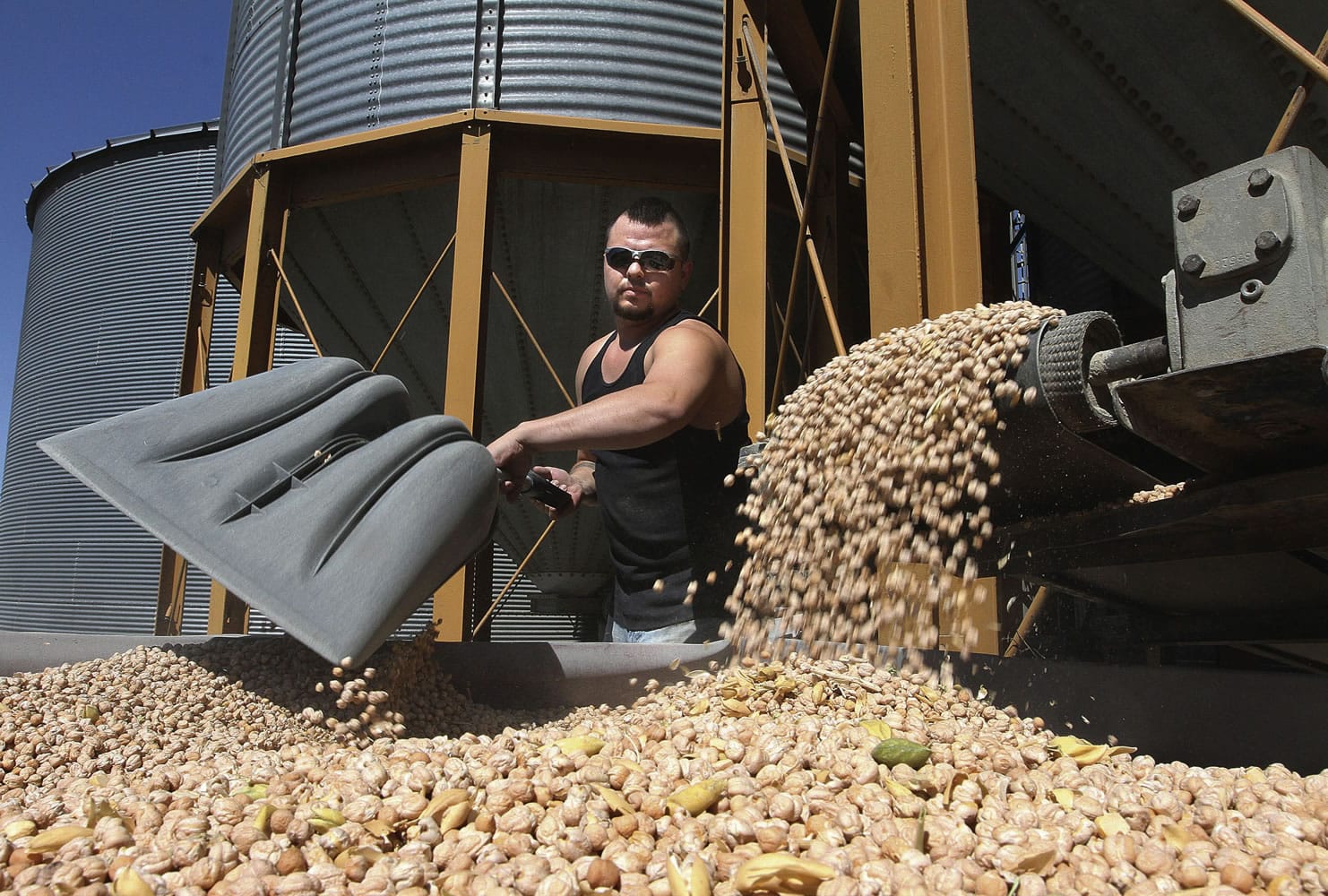SPOKANE — The rising popularity of hummus across the nation has been good for farmers like Aaron Flansburg.
Flansburg, who farms 1,900 acres on the rolling hills of southeastern Washington, has been increasing his production of chickpeas, a hummus ingredient, by about one-third each year to take advantage of good prices and demand.
“I hope that consumption keeps increasing,” he said.
Lawmakers in the nation’s capital hope so, too. The new federal Farm Bill contains two provisions to boost chickpea consumption, along with other “pulse crops,” peas and lentils.
Acreage devoted to chickpeas has exploded in the past decade in Washington and Idaho, which grow some two-thirds of the nation’s supply. Chickpeas require little water, and that’s a major plus in the dry area, Flansburg said.



